Utility Cruisers by Prana Cycles
An affordable bike inspired by Indian and British cycling culture

by Kate Beard
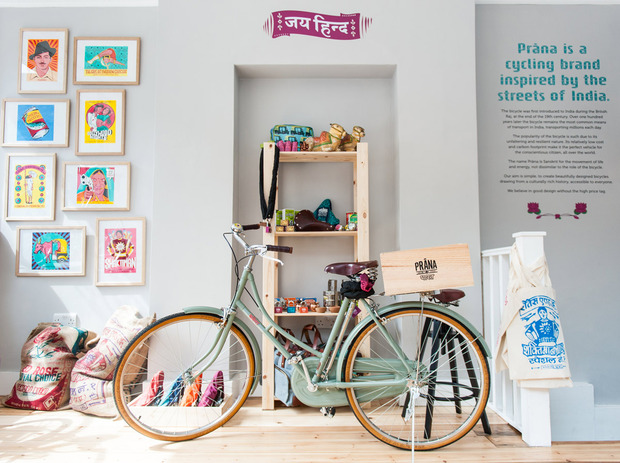
The inspiration to create a new company can come from many places. For Adriano Galardi and Richard Eastoe, it was a mutual love of cycling and visual design that turned their nebulous idea of creating an affordable but aesthetically pleasing city bicycle brand into Prana Cycles. The vintage-style black, cream or sage-colored cycles (which come in the men’s “Rama” style or women’s “Sita” style) have a timeless appeal.
The word “prana” comes from Sanskrit and represents the movement of life and energy, which Eastoe and Galardi believe is well-represented by the bicycle—especially in India. Drawing on a rich cultural heritage in India and a history of cycling in Britain, the duo—who met while working at FutureBrand—set out to create bikes that reflect the best of both cultures, with a mantra of “good design without the price tag.” And with the launch of Prana, these “bike-wallahs” are fulfilling their vision. To learn more we recently spoke with the two about how exactly the brand came to be.
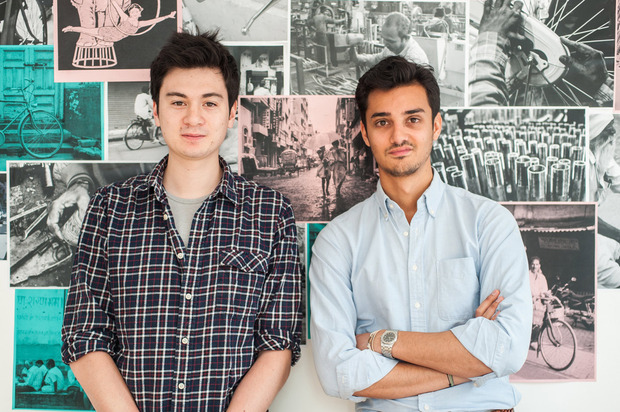
Can you tell us about how you guys came up with the concept of Prana Cycles?
Adriano Galardi: The idea for a cycle brand came when I moved to London and I really wanted to buy a bike. I live in central London and wanted to cycle everywhere, but it was only when I really looked into buying a bike that I realized how expensive a nice bike was. It kept bothering me that there seemed to be a gap in the market. If you wanted a nice-looking bike, it was £500 upwards—or you could buy a cheap, old bike.
When I was traveling in India a few months later, I noticed that the bicycles everywhere had the same vintage style that’s become popular in Western countries in recent years. Since there is a such a strong link between the UK and India, I thought it could be quite interesting to create a brand around the Indian bicycle and bring it back to the UK.
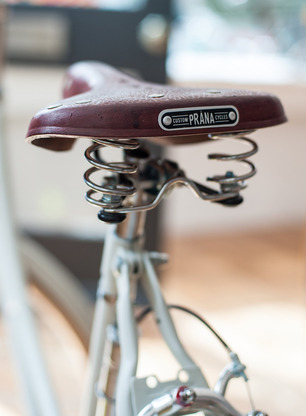
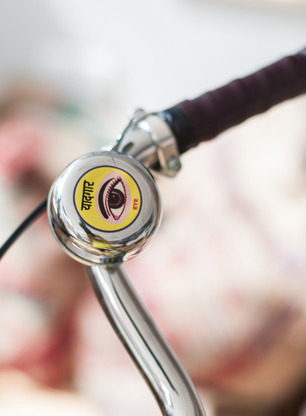
I came back and spoke to Richard—even though we hadn’t worked on any projects together, I knew that he was a really good graphic designer and that he was really into cycling. We met up for lunch one day and I said, “Rich, what would you say your two passions are?”
Richard Eastoe: I said, “Design and cycling.”
AG: And I said, “Great, that’s what I was hoping you would say!” So I told him about the idea, which was just a vague idea at the time. I had no idea of the execution or what the brand would look like or be called. We started working on it straightaway.
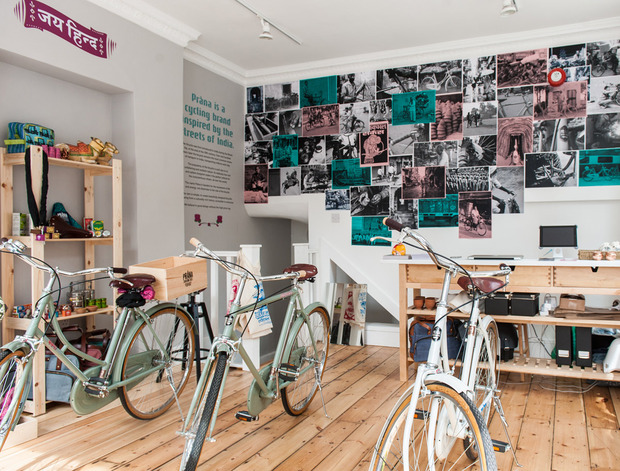
They didn’t want to deal with us because they thought we were crazy and that there would be no demand for that kind of bicycle in the UK.
How did the design process unfold—was it a long time between the idea and receiving the bikes?
RE: It was a combination of looking at vintage-style bikes and doing a lot of research into Indian design and visual language.
AG: For the actual design of the bicycle, we contacted loads of suppliers in India. Very few responded and even fewer agreed or were interested. That was the interesting point—that they didn’t see the demand for that type of bicycle outside of India. For them, that’s the kind of bicycle for the person that doesn’t have much money. They didn’t want to deal with us because they thought we were crazy and that there would be no demand for that kind of bicycle in the UK. When we finally found a few that did want to deal with us, they sent us their catalogues and we spent quite a while choosing each piece to end up with a bike we were happy with, one we thought fulfilled what people wanted in a vintage-style bike.
At what point did you make your trip to India to see the finished product?
AG: We went in January of this year. It took just under a year from the first contact with the supplier to when we visited India, which in theory was when our order was supposed to be ready. In the meantime, we received one or two samples. The first one came relatively quickly, but it was a disaster. It was nowhere near good enough for UK standards from a safety point of view, and it wasn’t aesthetically pleasing. There was a huge dip in our motivation.
RE: We received a new sample after five months. It was better, but there were still a lot of changes to be made. We were very picky because we knew what we wanted from a design point of view. So we kept pushing the launch date back—we initially had hoped to launch last summer, but we quickly realized it was impossible. Finally, in January, they said that our order was ready.
AG: We spent two weeks out there, visiting our supplier, inspecting and meeting the other suppliers they subcontracted some of the work to. We were meeting them for the first time because it was only phone calls before that.
RE: It was an amazing trip. We took advantage of being out there to take loads of photos and video, and to buy decorative items for the shop. We had to make further changes to the bikes, though. They needed another few months to fix the frames. We finally received [the finished product] a few weeks ago.
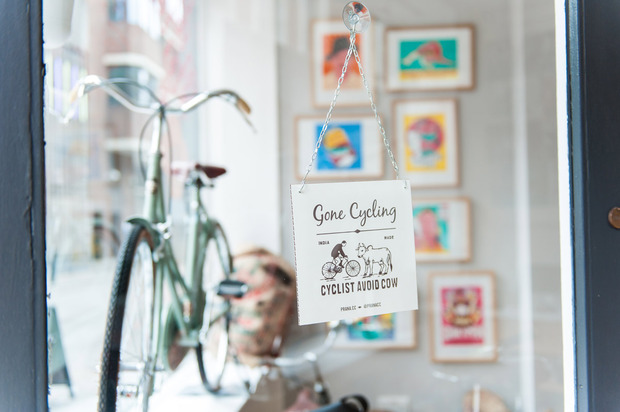
The customized decals are clearly inspired by India. Can you tell us more about what specifically inspired the designs?
RE: We did a lot of research into India, especially since there’s so much visual language out there. From architecture and painted street signs to packaging and matchbox artwork, it’s a real feast for the eyes. We decided to choose three areas to take inspiration from: matchbox artwork, truck art and street art.
AG: There is a huge culture of matchbox art which is disappearing, but the items have become collectibles. The artwork is fascinating in its quirkiness and randomness. In general they have this hand-painted culture that’s dying out. All the trucks are hand-painted, as is the signage in the streets. Unfortunately, it’s now being replaced by printers. The visual culture is so unique—there’s no other country in the world that has this richness, so we thought it would be nice to preserve it in a way.
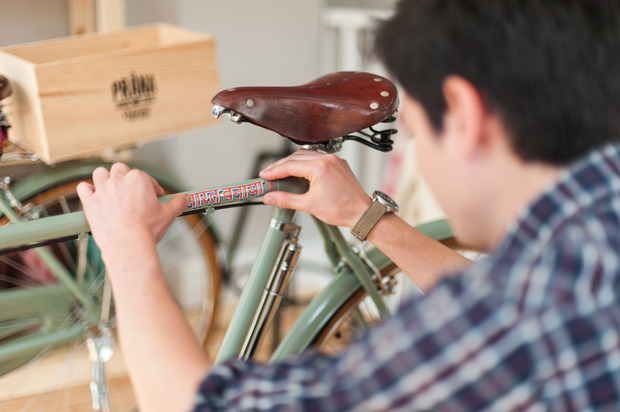
What have you found satisfying about having your very own company?
RE: I think you get much more satisfaction from working on something that you personally enjoy. It keeps your motivation high. This was an opportunity to create everything: the identity, the name, the logo, how it would look across all media, packaging design—it gave us a freedom to look at the whole spectrum that we weren’t able to before.
AG: We had to consider, “What is the story we’re going to tell?” With design there was so much we could talk about, but we had to bring it down to what the core message was. It was difficult because there was so much we wanted to say. In the end, part of the story we’re wanting to tell is about how the Brits took the bicycle to India and now we are bringing it back, along with its new culture.
Visit Prana Cycles online or stop by their London shop at 37 Marshall Street.
Photos by Kate Beard









